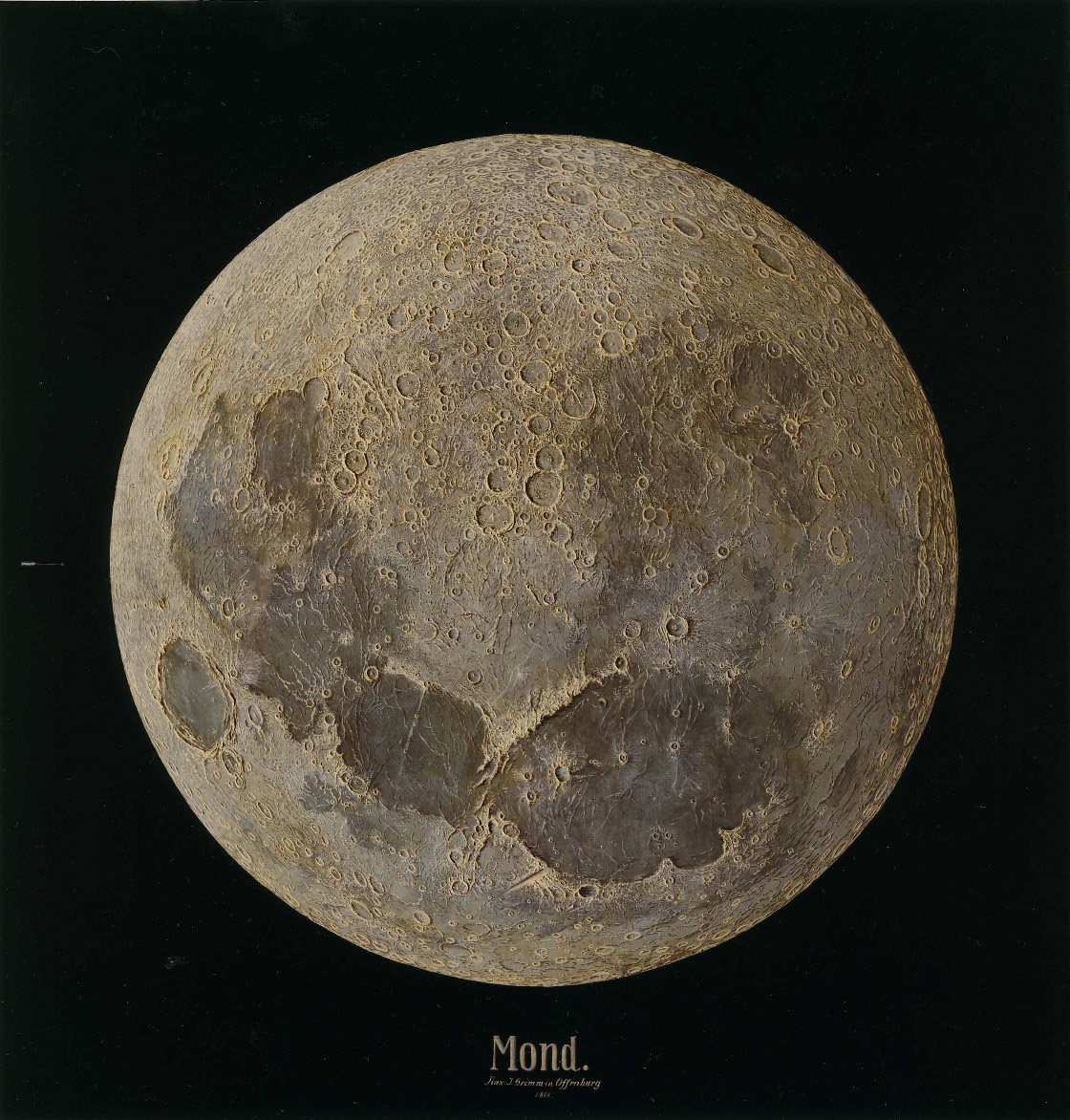March 24, 2014
An 19th Century Marvel

images from Carlton Hobbs LLC
| While looking with amusement at a New York Times article on how space exploration affected fashion I was stopped short by a small image of a Moon painting that I did not recognize. I quickly googled the credit name of Carlton Hobbs and - another wonder of the Internet - was taken to a totally unknown to me (and the lunar history books I've checked) painting of the Moon. And it is more than another pairing for it pioneered a number of ways to depict the Moon. But first, it was painted in 1888 by Julius Grimm (1842-1906), scientific photographer and artist, for the astronomically enthusiastic Grand Duke Friedrich of the German state of Baden. The painting was based on Grimm's telescopic photographs of the Moon and his personal observations with what looks like a 3 to 4" refractor on an unusual mount. This painting is remarkable in showing the surface of the visible portion of the Moon with a constant illumination angle. This is now commonly done with digital visualizations of lunar topography, but Grimm did it mentally and with a brush. Secondly, he emphasized mare ridges more than any map before or later. Third, Grimm built up thick layers of oil paint for crater and basin rims so that with a lighting source from the left (see the small arrow) the high points cast shadows, giving a convincing three-dimensional feeling. There are many other interesting depictions here. The rays of Tycho, Copernicus and Kepler are delicately represented, and the ones for Proclus are shown as not being uniform in all directions, but he has them in the zone of avoidance (Palus Somni) where they don't exist. Many tonal variations appear in the maria, but not all match modern depictions. Although the painting has quite fine depictions of nearly all landforms, the Alpine Valley appears like a crude gash. |
 |
Yesterday's LPOD: Three Mysteries for the Price of Two
Tomorrow's LPOD: A Snake with Two Heads
COMMENTS?
Register, Log in, and join in the comments.



